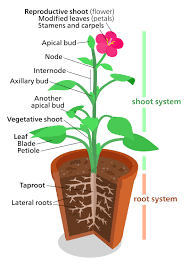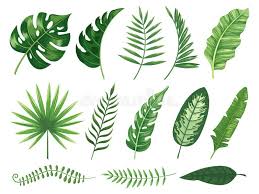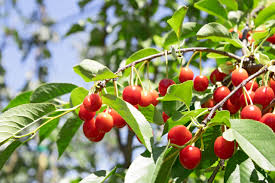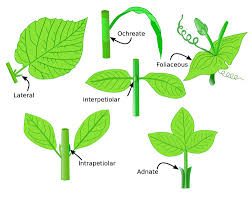All living organisms consist of cells. These cells form tissues, which in turn make up the organs. The various parts of plants are interconnected and function synchronously to produce the final yield.
Plant organs include the roots, stems, leaves, and reproductive structures (flowers, fruits, and seeds). Each organ plays a specialized role in the plant’s life. Roots, leaves, and stems are vegetative structures, while flowers, seeds, and fruits are reproductive structures.
The roots support the plant and supply it with water and nutrients. Stems connect the roots and leaves, and leaves capture energy from sunlight to manufacture carbohydrates for the plant.
Plants have specialized organs that enable them to survive and reproduce in various habitats. As mentioned earlier, all living organisms are made up of cells. These cells form tissues, which later become organs such as roots, stems, leaves, flowers, fruits, and seeds.
Read Also: Feed Lot Fattening of Rams Practice
Principal Parts of a Vascular Plant

A. The Plant Root
The root is the first plant structure to emerge from a seed during germination. Roots are primarily found below the soil surface, making up about 50% of a plant’s weight.
The first root to emerge from a seed is the primary root, or radicle. There are two basic types of root systems in plants: taproot systems and fibrous root systems.
1. Taproot systems feature a single, thick primary root, called the taproot, with smaller secondary roots branching out from the sides.
The taproot can penetrate as deep as 60 meters (about 200 feet) below the ground surface, reaching deep water sources and storing large amounts of food to help the plant survive droughts and other environmental stresses. The taproot also anchors the plant securely in the ground.
2. Fibrous root systems consist of many small branching roots, called fibrous roots, without a large primary root. The large number of threadlike roots increases the surface area for absorbing water and minerals, although fibrous roots provide less secure anchorage for the plant.
While most plant roots do not extend more than one to two meters into the soil, the taproots of many trees can grow deeply and access water from far below the surface.
The primary functions of roots are to absorb water and nutrients from the soil and to support the plant in an upright position. Roots also distribute the food energy produced in the leaves to rapidly growing areas at the root tips. Additionally, some plants use their roots as specialized food storage reserves.
B. The Plant Stem
Stems connect the roots with the leaves. Plant stems are vital because they transport water and nutrients from the roots to the leaves, and food energy from the leaves to the roots.
They also function as supportive structures, holding the leaves upright to capture sunlight. Tall, strong stems give plants a competitive advantage by elevating leaves above those of other plants, increasing their exposure to sunlight.
Young, green stems assist leaves in collecting sunlight for photosynthesis. Stems also support flowers and reproductive structures, facilitating the plant’s reproduction.
C. The Plant Leaf

Leaves are crucial to both plant life and all terrestrial life. The primary function of leaves is to capture sunlight for food manufacturing through photosynthesis. Photosynthesis occurs in specialized cells found in leaves or modified stems such as cladophylls.
During photosynthesis, water and carbon dioxide chemically combine in the presence of sunlight to produce sugars, oxygen, and water. Many external structures of leaves are designed to optimize photosynthesis and sugar production.
In addition to capturing sunlight for photosynthesis, leaves are essential for gas exchange. Photosynthesis requires carbon dioxide and produces oxygen.
To maintain a supply of carbon dioxide, plants open tiny pores called stomata located on the undersides of leaves. These openings allow carbon dioxide to enter, while oxygen produced during photosynthesis escapes.
At the same time, small droplets of water vapor evaporate from the humid environment inside the leaf into the dry air. This process, called transpiration, helps regulate water loss and supports nutrient transport.
D. The Plant Flower
Flowers are the reproductive organs of angiosperms (flowering plants). Reproductive structures are essential in the plant life cycle, promoting sexual reproduction and producing seeds and fruits that aid in dispersing the plant species.
Flowers, like other plant parts, vary in structure, size, and composition. Some flowers resemble stems, while others resemble leaves. Flowers develop from buds, like shoots, and are considered specialized branches of a plant.
Read Also: The Systems of Sheep Production
E. The Plant Fruits

A fruit is a ripened ovary. Fruits are the fleshy substances surrounding seeds. They are organs that contain seeds, protecting them during development and often aiding in seed dispersal. For example, coconut nuts float in water, allowing them to be transported to distant locations.
Fruits ripen as seeds mature within. They help distribute seeds rather than simply protect them. When humans and animals consume fruits, they act as channels for seed dispersal.
F. The Plant Seed
In flowering plants, seeds are structures containing the embryo for the next generation. Each seed consists of an embryo, a food source, and a protective outer coat. Seeds contain either one cotyledon (monocotyledonous plants) or two (dicotyledonous plants).
Cotyledons store food reserves. Seeds can remain dormant until environmental conditions are favorable for germination.
All living organisms consist of cells, which form tissues and organs. Plant organs, including the roots, stems, leaves, and reproductive structures, are linked and function together to produce the final yield.
Plants have specialized organs that help them survive and reproduce in diverse habitats. As previously mentioned, all living organisms consist of cells, which form tissues and later become organs such as roots, stems, leaves, flowers, fruits, and seeds. These organs perform specialized functions crucial to the life of the plant.
Do you have any questions, suggestions, or contributions? If so, please feel free to use the comment box below to share your thoughts. We also encourage you to kindly share this information with others who might benefit from it. Since we can’t reach everyone at once, we truly appreciate your help in spreading the word. Thank you so much for your support and for sharing!

